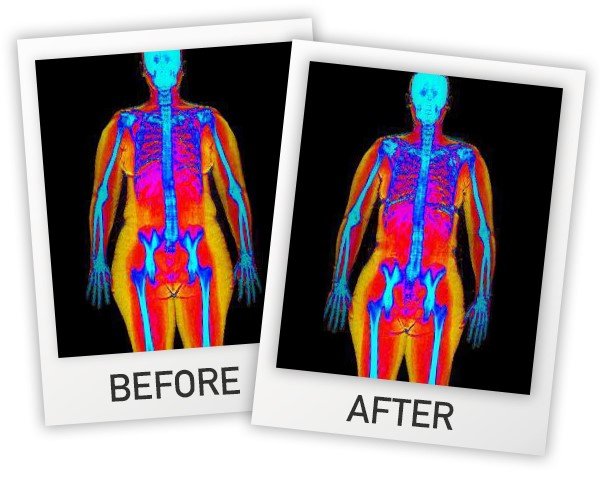Losing any amount of fat mass is a massive feat, but keeping it off as part of a normal lifestyle can without a doubt – be a challenge. So how can you keep the fat at bay that you have worked so hard to lose?
It’s important to understand that the ‘1200 calorie’ diet for women or the ‘1600 calorie’ diet for men might work effectively for the first month or two of weight loss – but this is not a lifestyle approach. Consistently eating at such restricted calorie total may instead, see an increase in fat mass and muscle loss. But if you’re eating less you should be losing more, right? Wrong. Your body is smart and realises that it isn’t being fed enough to maintain it’s normal bodily functions and thus as a survival mechanism, will hold onto fat to fulfil these needs. This is often when we see a plateau during weight reduction or weight gain during the maintenance period. Individualised total calorie targets can be easily calculated after a quick 3-minute DEXA scan. Unfortunately, online calculators make too many assumptions, and this may be the difference in maintaining your weight or gaining it back!
Maintaining a consistent eating pattern is perhaps one of the biggest influences when it comes to controlling weight. Studies have shown that people who eat a consistent diet across the week were 1.5 times more likely to maintain their body weight as opposed to those who ate strictly on the weekdays and relaxed diet on weekends.
Consistency in physical activity is also important – and by this I don’t mean hitting the gym 4-5 days a week. Whilst it’s not rocket science that this will continue to have benefits if consistently adhered to, I’m talking about a phenomenon called the ‘active couch potato’. Research has discovered is that there are particular cardio-metabolic consequences (higher blood pressure, increased waist circumference, abnormal glucose metabolism) and a higher chronic disease risk associated with a prolonged sitting time – regardless of regular ‘intentional’ physical activity. How to combat this? Make sure that if you have a job which requires prolonged sitting, get up and walk around the office every half an hour. Incorporate watching your weekly show whilst you’re on the bike at the gym rather than on the couch and aim for 10,000 steps or more a day, with over 50% of them being done outside the gym or run. Remember the more you move, incidental or not, the more calories burned. Taking a few laps around the office frequently throughout the day on top of regular exercise can go a long way to preventing re-weight gain.
Be conscious of your behaviours and confront problems directly. Preventing small regains from turning into larger relapses is critical to maintain long term weight loss. Be proactive in your new lifestyle and get regular DEXA scans (we recommend 4 a year) so you can catch small slips before they turn into larger regains. Maintaining weight loss for 2 years can reduce the risk of subsequent regain by nearly 50%! Keeping yourself accountable, particularly in those early months is important.
So, whether it’s 5kgs or 25kgs that you’ve lost, don’t let all that hard work and effort go to waste! Be smart about your eating and time spent sitting and keep yourself accountable with regular DEXA scans!
PIP TOCKUSS
B.CLINEXERPHYS, AES, ESSAM
Accredited Exercise Physiologist
References
Owen, N., Healy, G. N., Matthews, C. E., & Dunstan, D. W. (2010). Too much sitting: The population-health science of sedentary behavior. Exercise and Sport Sciences Reviews, 38(3), 105-113. doi:10.1097/jes.0b013e3181e373a2
Wing, R. R., & Phelan, S. (2005). Long-term weight loss maintenance. The American Journal of Clinical Nutrition, 82(1), 222S-225S. doi:10.1093/ajcn.82.1.222s

